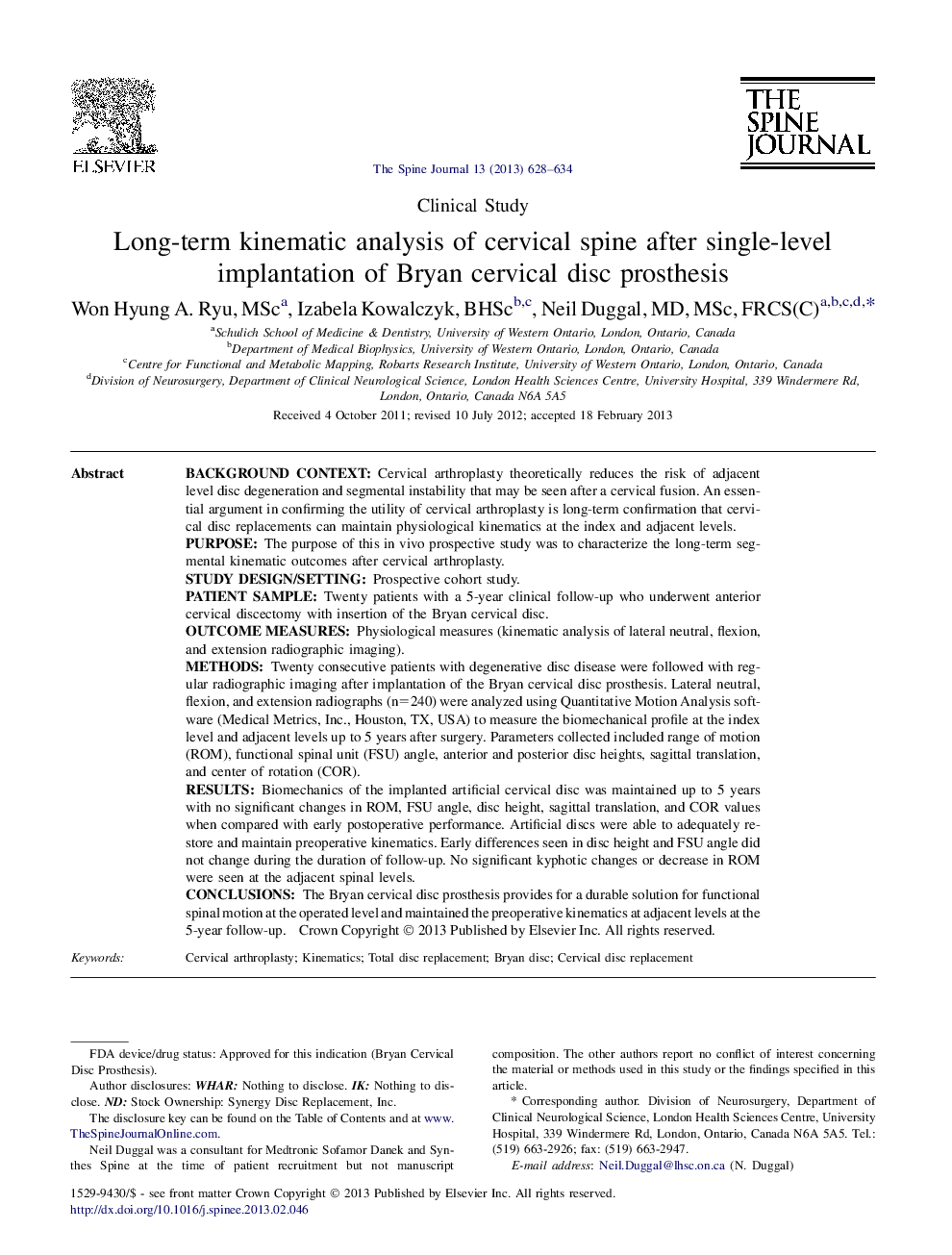| Article ID | Journal | Published Year | Pages | File Type |
|---|---|---|---|---|
| 4096890 | The Spine Journal | 2013 | 7 Pages |
Background contextCervical arthroplasty theoretically reduces the risk of adjacent level disc degeneration and segmental instability that may be seen after a cervical fusion. An essential argument in confirming the utility of cervical arthroplasty is long-term confirmation that cervical disc replacements can maintain physiological kinematics at the index and adjacent levels.PurposeThe purpose of this in vivo prospective study was to characterize the long-term segmental kinematic outcomes after cervical arthroplasty.Study design/settingProspective cohort study.Patient sampleTwenty patients with a 5-year clinical follow-up who underwent anterior cervical discectomy with insertion of the Bryan cervical disc.Outcome measuresPhysiological measures (kinematic analysis of lateral neutral, flexion, and extension radiographic imaging).MethodsTwenty consecutive patients with degenerative disc disease were followed with regular radiographic imaging after implantation of the Bryan cervical disc prosthesis. Lateral neutral, flexion, and extension radiographs (n=240) were analyzed using Quantitative Motion Analysis software (Medical Metrics, Inc., Houston, TX, USA) to measure the biomechanical profile at the index level and adjacent levels up to 5 years after surgery. Parameters collected included range of motion (ROM), functional spinal unit (FSU) angle, anterior and posterior disc heights, sagittal translation, and center of rotation (COR).ResultsBiomechanics of the implanted artificial cervical disc was maintained up to 5 years with no significant changes in ROM, FSU angle, disc height, sagittal translation, and COR values when compared with early postoperative performance. Artificial discs were able to adequately restore and maintain preoperative kinematics. Early differences seen in disc height and FSU angle did not change during the duration of follow-up. No significant kyphotic changes or decrease in ROM were seen at the adjacent spinal levels.ConclusionsThe Bryan cervical disc prosthesis provides for a durable solution for functional spinal motion at the operated level and maintained the preoperative kinematics at adjacent levels at the 5-year follow-up.
